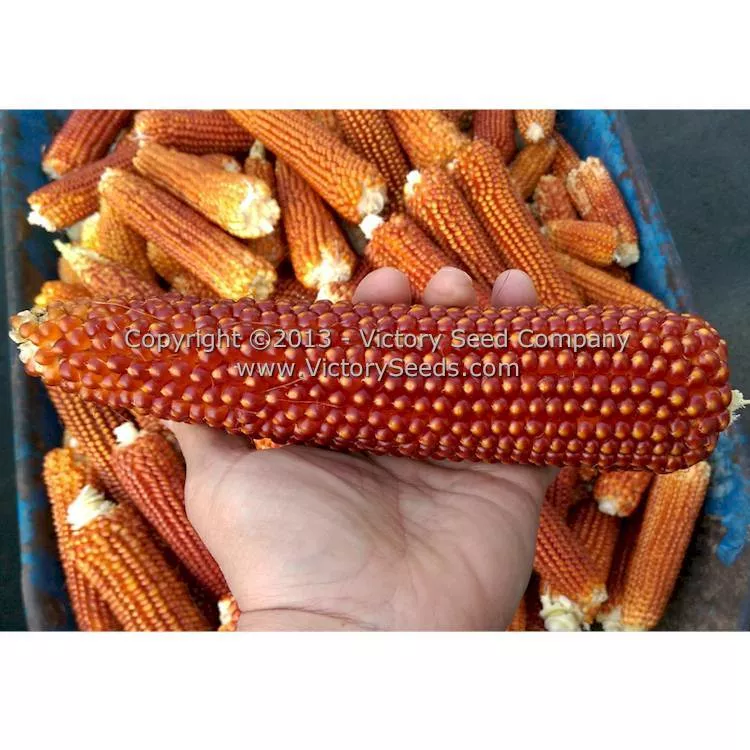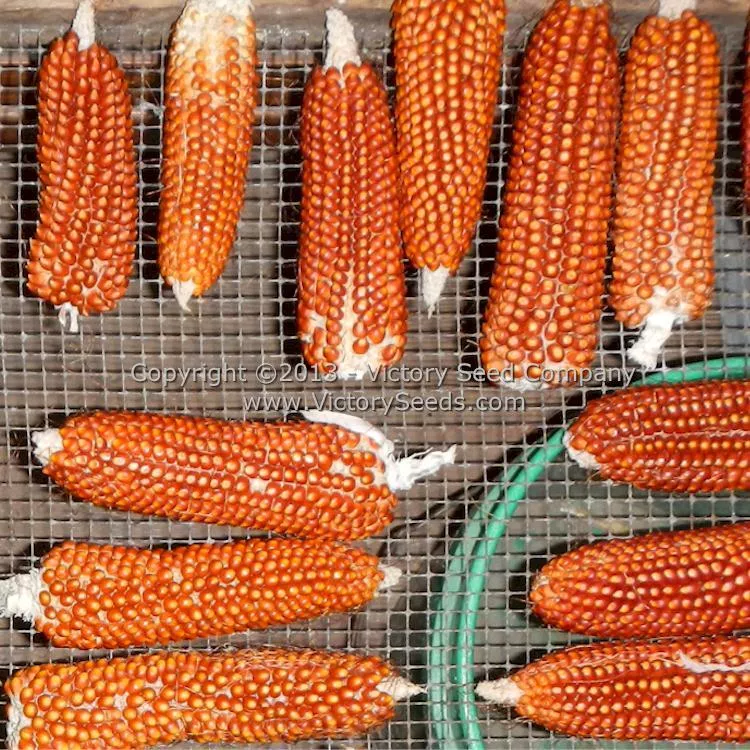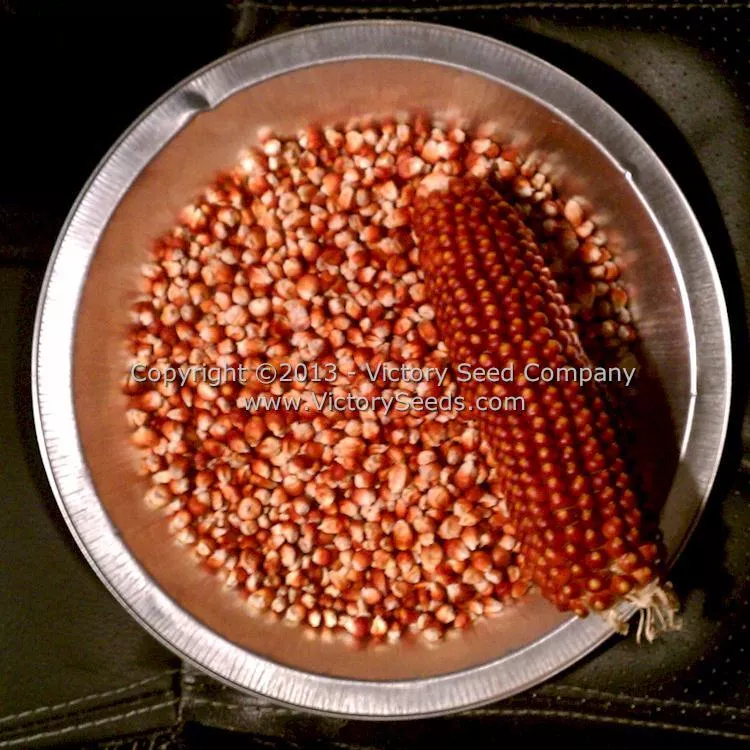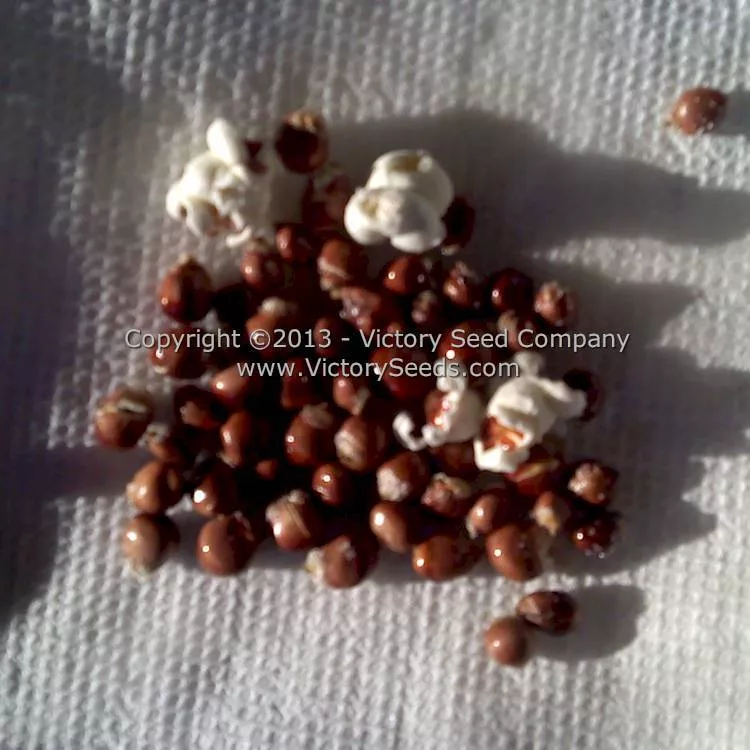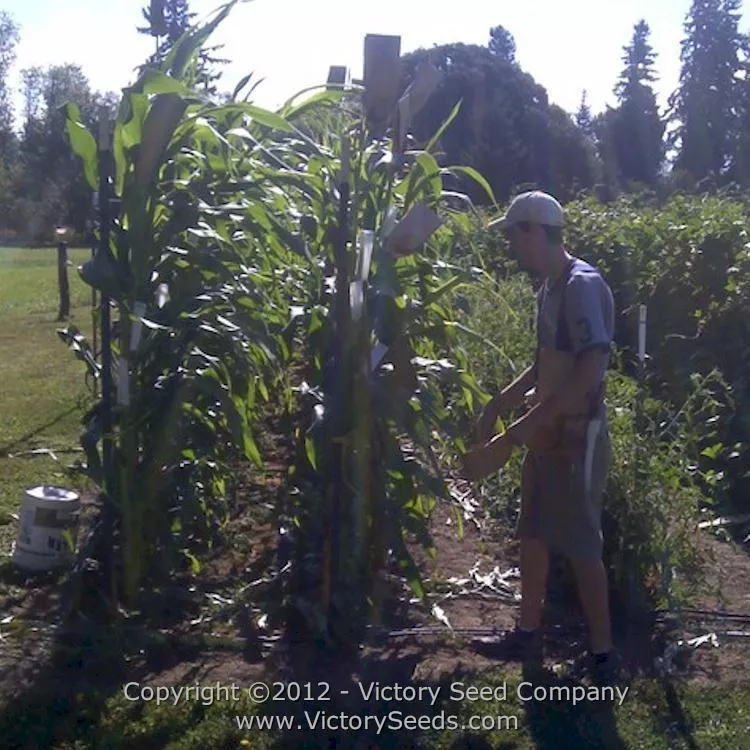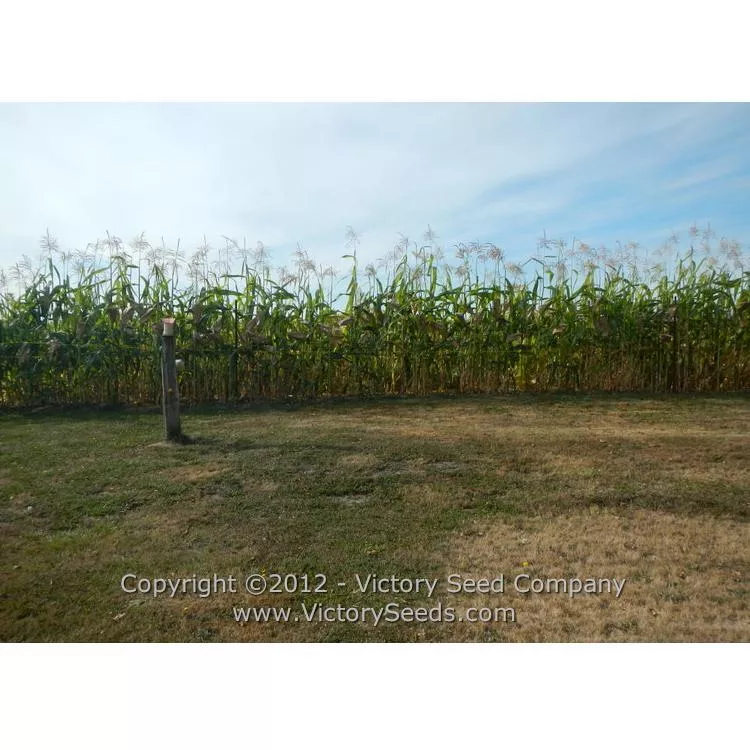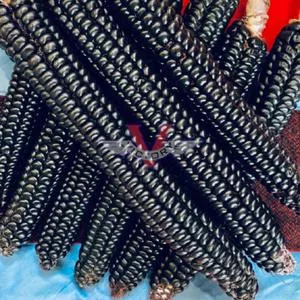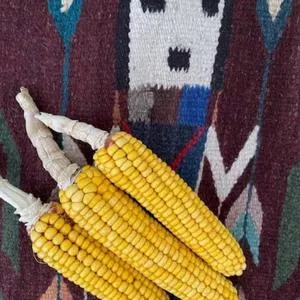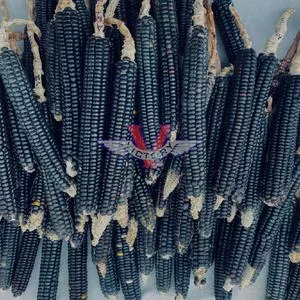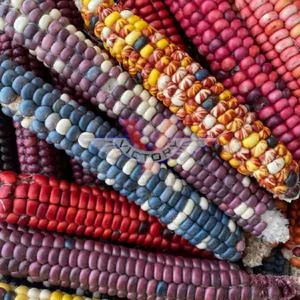





Floriani Red Flint Corn
Zea mays subsp. mays
Price: $3.99
SKU: 31404311Choose a variant:
95 to 100 days - The stalks are sturdy and reach ten feet in height. The ears are six to seven inches long with twelve to sixteen rows of medium to deep-red colored kernels that are lightly yellow-tipped and slightly pointed. It is a very versatile and tasty corn.
While we were exhibiting the 2012 Mother Earth News Fair in Puyallup, Washington, then editor of the magazine, Cheryl Long, told us about this variety. During the conversation she made an interesting point that although corn is native to the "New World," and by far the largest commercial crop grown here, modern people do not eat real corn anymore. "You can't even really buy good corn meal in the grocery store," she said. "There is no selection; Just generic 'corn meal' with no hope of knowing what variety you are eating or how long ago it was ground."
We have to admit that she sold us on the idea that everyone, from a small gardener to a homesteader, should be eating grain that they grew, harvested and processed themselves, with corn included at the top of the list. Cheryl and her sister both sent me seed and we started growing it.
'Floriani Red Flint' was named by William Rubel after his Italian friends who grow it and generously shared their seeds. Adapted over the centuries, through selection, by the Alpine farmers who ate it themselves, it became the staple polenta corn of the people living in the Valsugana Valley near the city of Trento, in Italy.
Along with being used for making polenta or grits, it can also be used to make an amazing corn bread or in any other recipe calling for corn meal. A friend of mine asked me if it popped. So I did an experiment (see picture above) and learned that it makes an awesome tasting parched corn. Check out the "More Information" tab above for informational links and recipes. Each ounce is approximately 100 to 110 seeds.
Planting Instructions:
Soil must be at least 65ºF to germinate. Be patient and do not plant too early or you will waste a lot of seed! Plant in full sun and keep it watered. Corn is a wind-pollinated plant. Plant in blocks several rows wide to ensure full ears.
Sow seeds about 1½ to 2½ inch deep, 3 to 4 inches apart, in rows spaced 24 to 30 inches apart. Thin to 6 to 12 inches apart.
Harvest Information:
Pick the ears for dry grain or decoration when the husks are dry and the kernels are hard enough that you cannot make a dent in them with your fingernail. Many people pick the ears too early when kernels are still soft. If this is done they shrivel up and shrink and their beauty is destroyed. They cannot finish maturing once they have been picked.
Even though the ears look dry, there remains moisture deep within the cob. If you were to enclose them in a box, the moisture would cause them to sour and mold. You may let them dry longer on the plants if neither weather nor predators are damaging them. Otherwise hang them up or lay them out in the open until they are completely dry inside.
Sow seeds about 1½ to 2½ inch deep, 3 to 4 inches apart, in rows spaced 24 to 30 inches apart. Thin to 6 to 12 inches apart.
Harvest Information:
Pick the ears for dry grain or decoration when the husks are dry and the kernels are hard enough that you cannot make a dent in them with your fingernail. Many people pick the ears too early when kernels are still soft. If this is done they shrivel up and shrink and their beauty is destroyed. They cannot finish maturing once they have been picked.
Even though the ears look dry, there remains moisture deep within the cob. If you were to enclose them in a box, the moisture would cause them to sour and mold. You may let them dry longer on the plants if neither weather nor predators are damaging them. Otherwise hang them up or lay them out in the open until they are completely dry inside.
Informational References:
- "How to Make Grits, aka Polenta, from 'Floriani Red Flint' Corn," by Cheryl Long, Mother Earth News
- "Floriani Red Flint Corn: The Perfect Staple Crop," by William Rubel, Mother Earth News, Dec. 2010 / Jan. 2011
- "Best Cornbread Recipe," by William Rubel, Mother Earth News, Dec. 2010 / Jan. 2011
Notes:
- Polenta is cornmeal boiled into a porridge, and eaten directly or baked, fried or grilled. The term is of Italian origin, derived from the Latin for "hulled and crushed grain." In ancient times this was commonly barley-meal which was replaced by corn (maize) many centuries ago.
Customer Reviews:
Do you have experience with this one? 📝 📣 Write a review!
No reviews have been posted yet.

